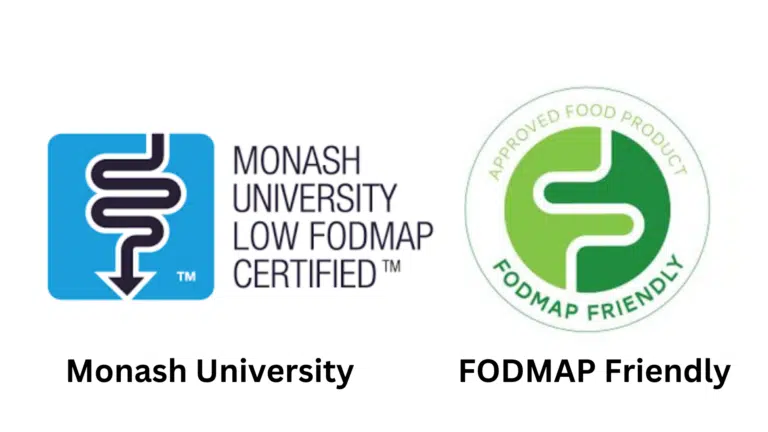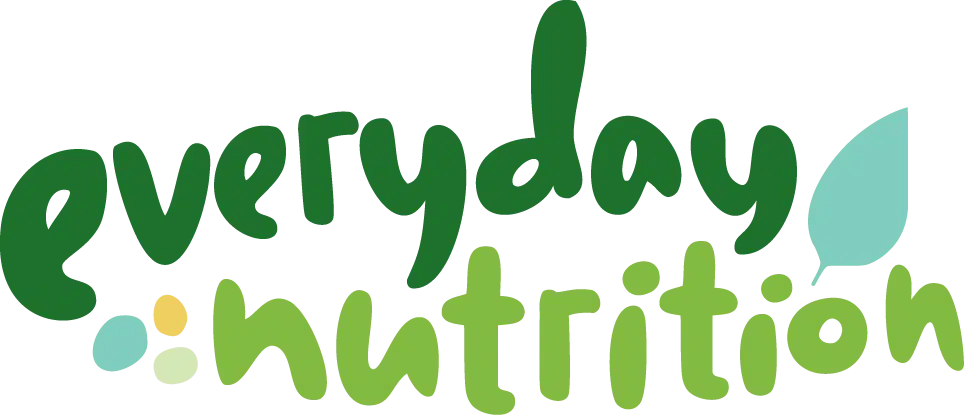Label reading can be one of the most daunting aspects of following a low FODMAP diet. Many people find reading and interpreting ingredient lists somewhat overwhelming at first, because FODMAPs can hide in the most unexpected foods and under the guise of a variety of names. The good news is that with practice, most people find it doesn’t take too long before they are feeling much more confident about label reading, and choosing foods suitable foods all on their own!
Download a Label Reading Cheat Sheet here
We’ve created a few key steps to get you started on the road to label reading like a pro.
1. There are some foods that don’t have ingredient lists but are naturally low FODMAP, and can be freely included.
- FODMAPs are types of carbohydrates, so simple foods like fresh meat, oils, cheese, butter/margarine (that do not contain carbohydrates) are naturally suitable. Of course, be wary of any added seasonings, sauces or marinades listed in more processed and flavoured foods.
- Whole foods like fruits, vegetables, nuts and grains usually don’t have an ingredient list (ie. unpackaged). Cereals like rice or oats may be packaged, and have only one ingredient present! In these cases, consult the list from your dietitian, or use the FODMAP Friendly or Monash smartphone apps to determine suitability. An important aspect here is the serving size that is considered low FODMAP: eg. oats in ½ cup serve are low, but at 1 cup they become high in the GOS FODMAP group. Apps are well worth investing in, as they are the easiest and most reliable way to stay up to date, in the ever-changing world of FODMAP knowledge.
2. Low FODMAP claims and certified foods
Packaged foods come with all sorts of information and claims. Of course with the awareness of FODMAPs increasing, marketers are jumping on board with “fructose friendly” and “tummy friendly” claims. In most cases these do not carry any weight -the exceptions to this are the FODMAP Friendly and Monash certification schemes.
Monash logo: Monash university do a lot of research into the low FODMAP diet, as well as testing foods and food products for FODMAP content. The Monash certification logo identifies food products that are suitable for a low FODMAP diet.
FODMAP Friendly logo: This is a registered certification trademark and products that carry this logo have been laboratory tested and shown to be low in FODMAPs at the manufacturers specified serve size. This logo can be used to safely identify low FODMAP foods.

3. Low FODMAP by ingredient
Now we start to delve into packaged foods that contain a number of ingredients (some may have a surprising number indeed!) as well as ‘contains’ or ‘may contains’ allergen declaration statements.
Firstly, it’s helpful to know that the manufacturer must list ingredients in descending order, from largest to smallest. It’s also good to know that key ingredients need to declared in the percentage present. An example of this is ‘honey, 2%) in a ‘honey and nut’ muesli bar.
Work your way down the list and use your Monash app or dietitian notes to check the suitability of ingredients. This can take a lot of time to start with, but once you become more familiar with the process, you’ll build up a database of suitable and non-suitable ingredients in your memory bank, and find yourself being able to skim through quite quickly. If you are new to FODMAP, Spoonful app is a great option to identify ingredients that you need to check against your app or watch serve size on.
NB. If you are just beginning the low FODMAP diet and following the Elimination or Challenge phase, we suggest avoiding foods that contain high FODMAP ingredients. If you are past these phases, you will have a good idea or which ingredients you can tolerate in small amounts and which ones to be wary of.
Here’s a few key points to keep in mind
Lactose free dairy, be on the lookout for:
- High FODMAP fruit flavours e.g. cherry or mango
- High FODMAP sweeteners e.g. fructose, fruit juice concentrate or honey
- Inulin (often used in low fat yoghurts to thicken the texture) which can also be declared as ‘plant fibre’ or ‘chicory root’
Gluten free products are not always low FODMAP!
(read more about the difference between gluten & FODMAPs here) Watch out for:
- besan (chick pea flour), soy flour, almond meal in large amounts.
- Inulin (again!) which is often added to increase fibre content
- Honey, dried fruits, fruit juice concentrates as sweeteners
Understanding wheat ingredients:
- Where wheat is a main ingredient (eg. bread, pasta, pizza base), the product is usually considered high FODMAP
- Gluten is not a FODMAP, and may often be used to improve the texture of wheat free breads, biscuits and pastries
- Breads made with wheat and spelt (another type of wheat) which have undergone the sourdough process are generally considered low FODMAP
- Small amounts of wheat flour (ie. toward the end of ingredient list, or in condiments like soy sauce) are not a FODMAP concern
- Ingredients like glucose, starches and flavours from wheat are absolutely fine! (they are processed and do not contain FODMAPs)
Additives & preservatives
Certain ingredients or additives will be denoted by unfamiliar sounding names and / or numbers. Many of these are fine!
‘e-numbers’ identify the function of the ingredient and in most cases are not a FODMAP concern. The only ones we need to be wary of are these artificial sweeteners:
- Isomalt (953)
- Maltitol (965)
- Mannitol (421)
- Sorbitol (420)
- Xylitol (967)
- Lactilol (966)
- Erythritol (968)
Ingredients from the onion family:
Onion, garlic, shallot and leek are often found in savoury products like soups, curry pastes, pasta sauces, marinated meats, flavour ‘sachets’ and simmer sauces. They will usually be listed as such, and should be avoided if present.
However, because the onion family are not considered ‘allergens’ by Australian law, they do not have to be declared in plain English, and can masquerade under names such as ‘vegetable powder’ or ‘dehydrated vegetables’. We recommend avoiding these ingredients, particularly if they are higher up the ingredient list.
Flavours/spices/flavourings:
Good news: All individual spices (eg. ‘cumin’) or herbs (eg. ‘oregano’) are low FODMAP and safe to include! Where an ingredient list simply declares ‘spices’, or ‘flavourings’ it becomes a little more murky. These are what we call “compound ingredients” because they are made up of other ingredients and listed under the one name. Labelling laws differ between countries, but in Australia, only ‘allergens’ have to be declared if the compound ingredient is under 5% of the product.
It can be hard to draw the line between what is allowed and what is not on the Elimination phase, but at Everyday Nutrition, our advice to allow ‘spices’ or ‘flavourings’ unless high FODMAP ingredients are actually identified. The exception here is when ‘vegetable powder’ or ‘dehydrated vegetables’ are listed, as these usually do contain concentrated amounts of onion/garlic.
Final Thoughts
The low FODMAP diet is proven to be effective for 3 out of 4 people who suffer with IBS type symptoms. If you are struggling to pinpoint your triggers or seem to be reacting to low FODMAP foods, keeping a food and symptom diary and troubleshooting with a dietitian who is experienced in this area, is likely to help you work out what is going on and the best way to manage it.
Everyday Nutrition dietitians are gut health experts with the knowledge and skills to support you with personalised advice and gut health solutions. We consult privately in Melbourne’s inner south east and via Telehealth around Australia. Make an appointment today to resolve digestive issues and make peace with food.







